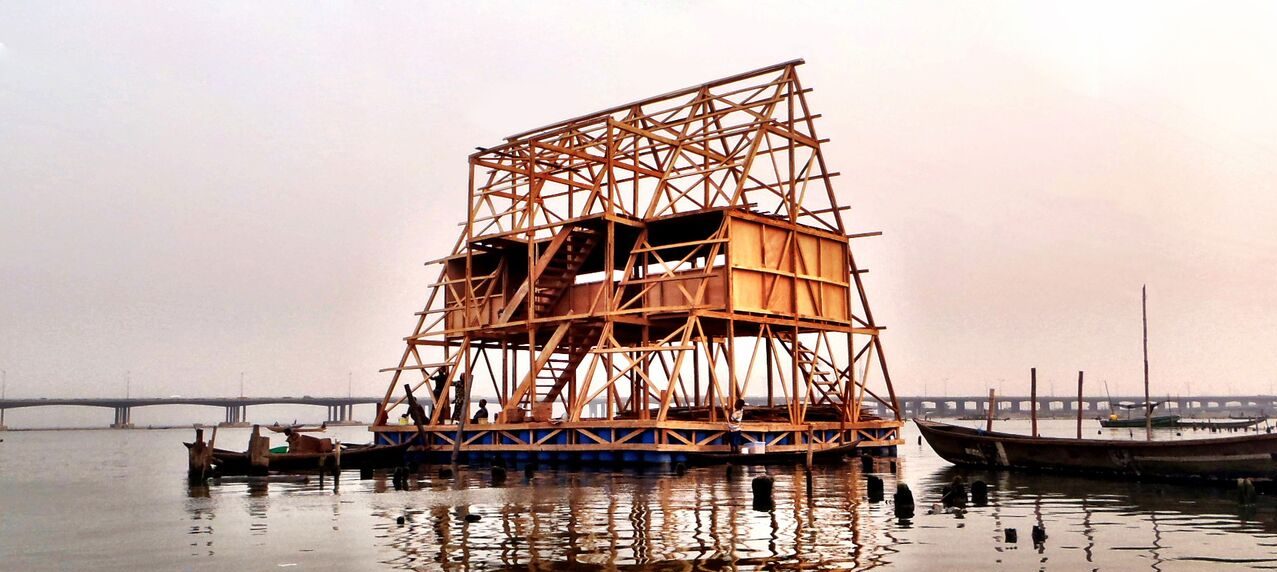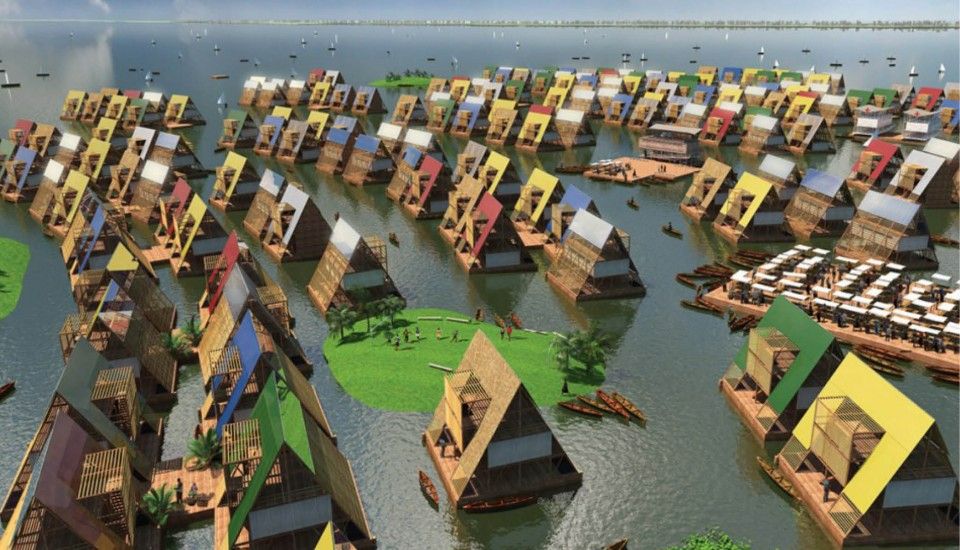The Makoko Floating School: Why Kunle Adeyemi’s Masterpiece is a Philosophy for the Future
During the Venice Architecture Biennial in 2016, anchored under the Gaggiandre covered shipyards, was a strange floating structure made predominantly of wood. Observers would get to know later that it is in fact the MFS II, an upgrade on Kunle Adeyemi’s Makoko Floating school, constructed 3 years earlier in the riverine community of Makoko in Lagos state, Nigeria.
Of national and international appeal, the Makoko Floating school catapulted Kunle Adeyemi and his firm, ‘Nle’ to architectural superstardom. More than that though, the project emphasised the accommodation struggles of the lower divide of the economic class, suggesting a model of architecture that could assuage these struggles and even revolutionize housing in the overly populated city of Lagos, Nigeria and eventually, Africa as a whole.

Commuters along the Third Mainland bridge in Lagos would often notice a small community floating on water. This community is Makoko, often called the ‘Venice of Lagos’. However, besides the fact that it also floats on water, the lifestyle of the people of Makoko is as far from those of Venice as imaginable. A ‘slum’; Makoko’s total population remains unknown as it is not formally recognized or ‘governed’ in the real sense of the word. Many literature dates its inception to the 18th century. The community was initially made as a fishing community and this remains the primary occupation of its inhabitants. A low-income inhabitant housing about 400,000 people, according to the Local Chief’s estimate, located in the middle of one of the most industrialized and commercialized state in Africa definitely deserved more attention than it was being given and Kunle Adeyemi saw that and promptly reacted.

The plan for the MFS was a prototypical floating structure that would be able to house about 200 students. It is a pilot project that uses innovation design to address the needs of a community that lacks basic social and physical needs in an era of impactful climate change and rapid urbanization and according to NLE, its major purpose ‘…is to generate sustainable, ecological alternative building systems and urban water cultures for the teeming population of Africa’s coastal regions’. The MFS was constructed with local woods and floated on recycled plastic bins. The structure was a three-storey building that had the school’s classes on the first floor and the lower floor as a playground while the topmost floor also serves as an open-air rooftop classroom. Energy is generated via the use of solar pie cells that makes the facility self-sufficient. Shades were also constructed on the outer spaces to produce adequate ventilation.

The Makoko Floating School unfortunately collapsed less than three years after its completion. Going by the report given by Nle, poor maintenance by the community which had full control over its use with Nle in an advisory role, theft, and the immediate effect of strong winds culminated in its collapse. However, Nle affirmed that the MFS I was only a prototypical structure, built experimentally to advance an ideal that suggests that the Third-World needs to start harnessing nature as a tool of development rather than ‘fighting’ against it.

Prior to Adeyemi’s MFS, the Makoko community was on the verge of demolition as the state government sees its habitation as illegal. It was the proverbial elephant up a tree, it doesn’t matter how long it has stayed, it was doomed to come crashing down. Adeyemi’s innovation changed this narrative. The international community took an interest in Makoko with the MFS as a focal point. The school became a site of tourism, generating another source of income for the community. The design got mentioned in reputable local and international magazines and outlets such as New York Times. CNN, Design Boom, The Guardian, Arbitare and many others. The decision to decimate the community was mooted and the voices of its leaders asking for development over demolition got a lot louder. That is the impact of design.
Makoko might not have their floating school but a building occupying a few square metres of water space was just enough to put the community on the map. Adeyemi’s plan for MFS II was on display at Venice and he has developed a three-phase design with the MFS as its first, floating house Units as its second and the third phase is a grand proposition involving a Lagos Water Community Project.

Architect Adeyemi saw a community with a problem, he worked hand in hand with the community to identify their most pressing needs, he set about to design and develop a solution. This is a philosophy that needs to be adopted by the African teeming design populace. An era of channeling African Design into solving Africa’s problem. It is a call to action, a display of future possibilities; a telling of an era that believes in the prowress of African Design and its viability as a tool of social development in Africa.



